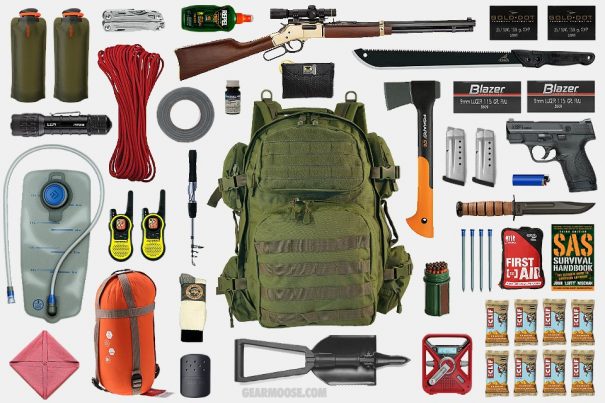It’s only good if it works: Here’s how to test your bug out bag for when SHTF
Tuesday, April 24, 2018 by Jayson Veley
http://www.bugout.news/2018-04-24-heres-how-to-test-your-bug-out-bag-for-when-shtf.html

To more inexperienced preppers, creating a bugout bag might seem easy – just find a bunch of survival stuff, throw it into a sack, and you’re good to go, right? Not exactly. It’s one thing to have a bugout bag ready to go when SHTF, but it’s something entirely different to actually know that your bugout bag works. The following is a number of helpful tips and pieces of advice on how to test your bugout bag to make sure it’s ready for a survival situation, courtesy of AmericanPreppersNetwork.com.
Weigh all of your bugout gear
Getting from Point A to Point B while carrying a heavy bugout bag can be quite challenging, and will also drain your energy much faster than if you had a bugout bag filled with just the necessities. This is why it is important to carefully go through each and every item in your bugout bag and determine whether or not it is appropriate for the wilderness. Double-checking your equipment will also help to make sure that you aren’t carrying any duplicates. (Related: Here are ten steps to take to begin prepping for a disaster.)
Method of navigation
Due to the very real possibility that your phone’s GPS will no longer function properly in a large-scale crisis situation, you should strongly consider making a backup navigation plan so that you can still find your way through the wilderness. Be sure to include a durable compass, topographical map, SE navigation cards, and a fine point pen to make notes in your bugout bag. While these navigation tools are important to have, Survivalist101.com points out that there are a number of different ways you can navigate while off the grid that rely solely on the natural surroundings, including through the use of the moon, the stars, and even tree and vegetation patterns.
Escape and evasion routes
In a SHTF scenario, going out into the wilderness and blindly traversing the landscape is one of the worst decisions you can make. You need to plan your escape and evasion routes beforehand so that you know where to go and how to get around potential obstacles. Your escape route should ideally take you to smaller roads rather than highways, considering the fact that, in a survival situation, most people will travel along the main roads. Avoid the crowd and carve out your own path to safety. (Related: If you’ve stopped prepping, it could be the biggest mistake of your life.)
Weather
Since the weather is completely unpredictable (especially in a SHTF situation where you won’t have access to local weather TV stations), it’s a good idea to prepare yourself for the worst. The idea is to be ready for whatever kind of extreme weather comes your way. For example, in case of rain or torrential downpours, you are going to need a way to keep the gear inside of your bugout bag dry. Pack water-repellent clothing and durable raingear so that you can keep yourself and your equipment dry. In addition to clothing, there are a number of other waterproof technologies that you can get your hands on so that you can be prepared for extreme weather in a survival situation. Consider what types of weather you will likely encounter, and establish a plan on how you will safely get through it.
Discipline
You need to consider how close you are to populated areas, and adjust what you do and how you do it accordingly. For instance, if you plan on building a fire on a regular basis, keep in mind that the smoke it sends into the air is likely going to be seen by others. As such, learn which types of trees and kindling don’t produce a lot of thick, heavy smoke. Practice self-discipline, and remember that you likely won’t be the only one trying to survive in any given region.
Sources include:
Tagged Under: Tags: preparedness, prepping, SHTF, survival

